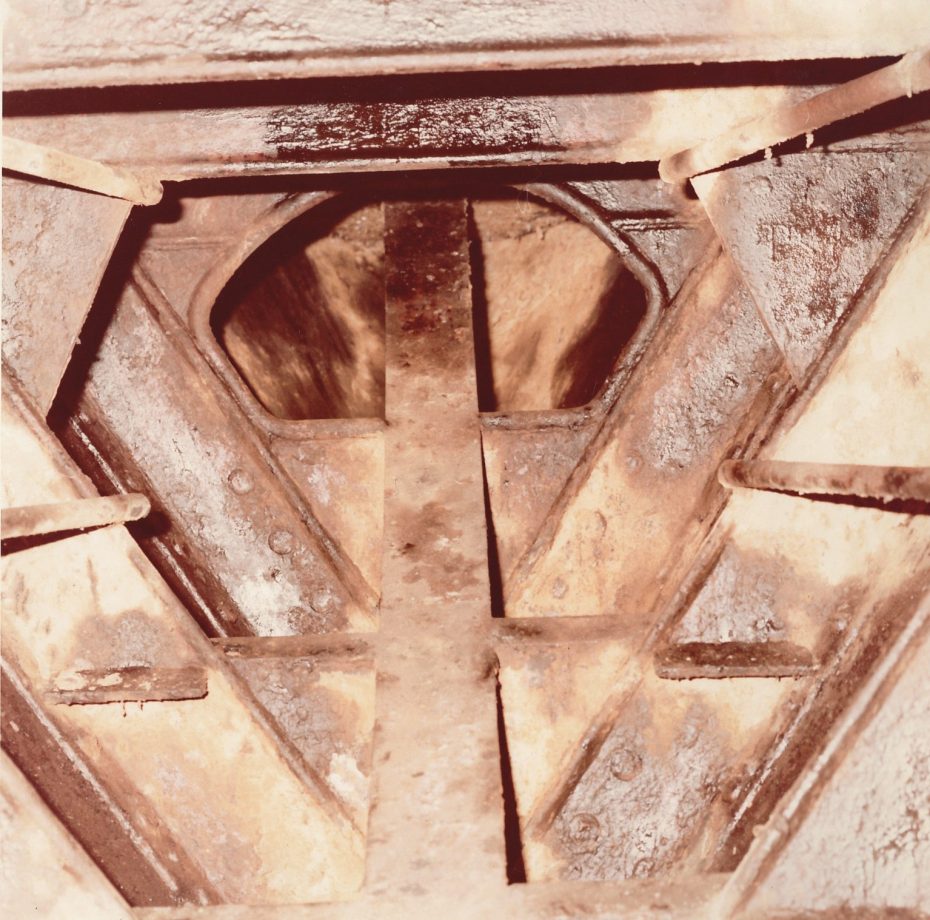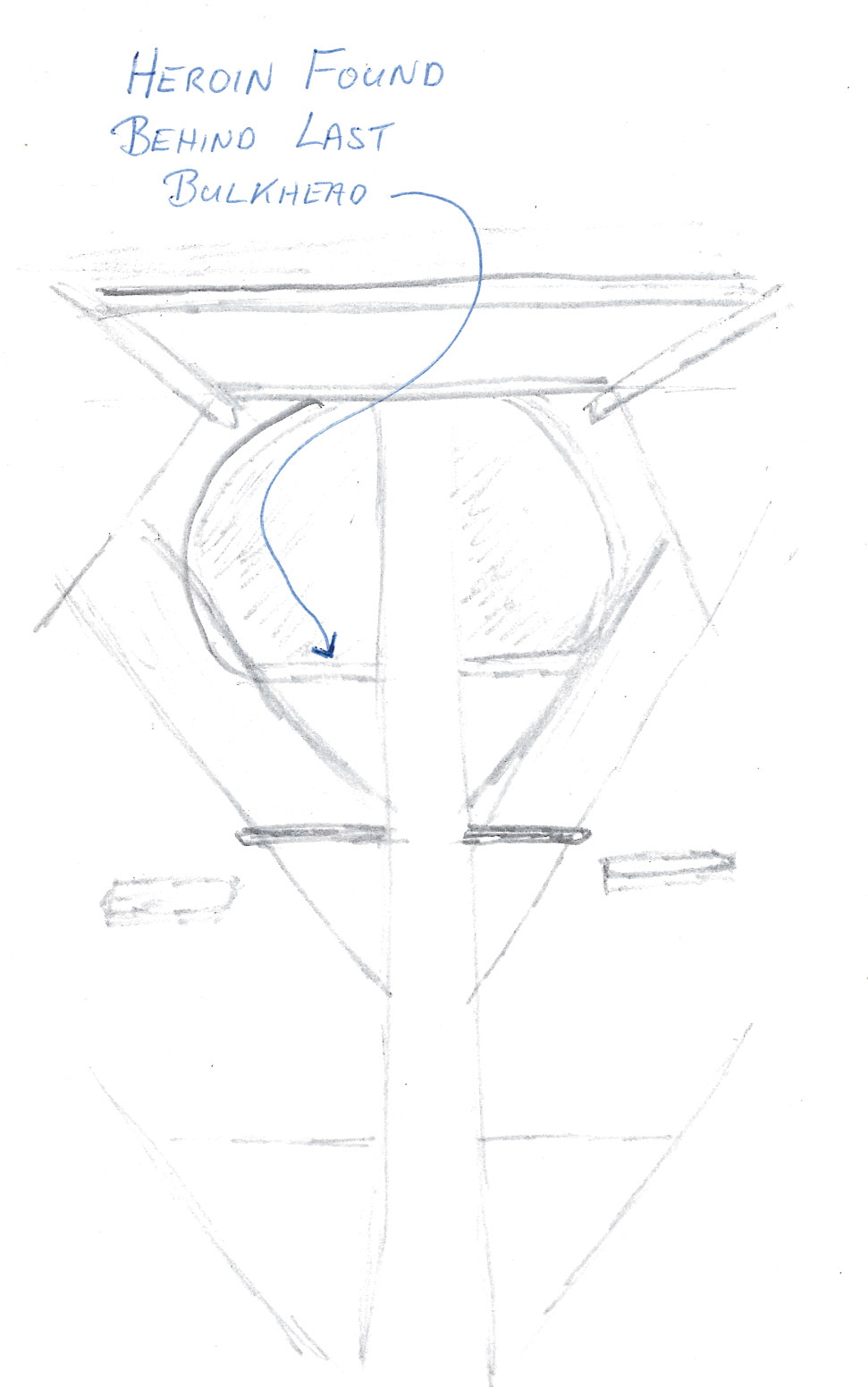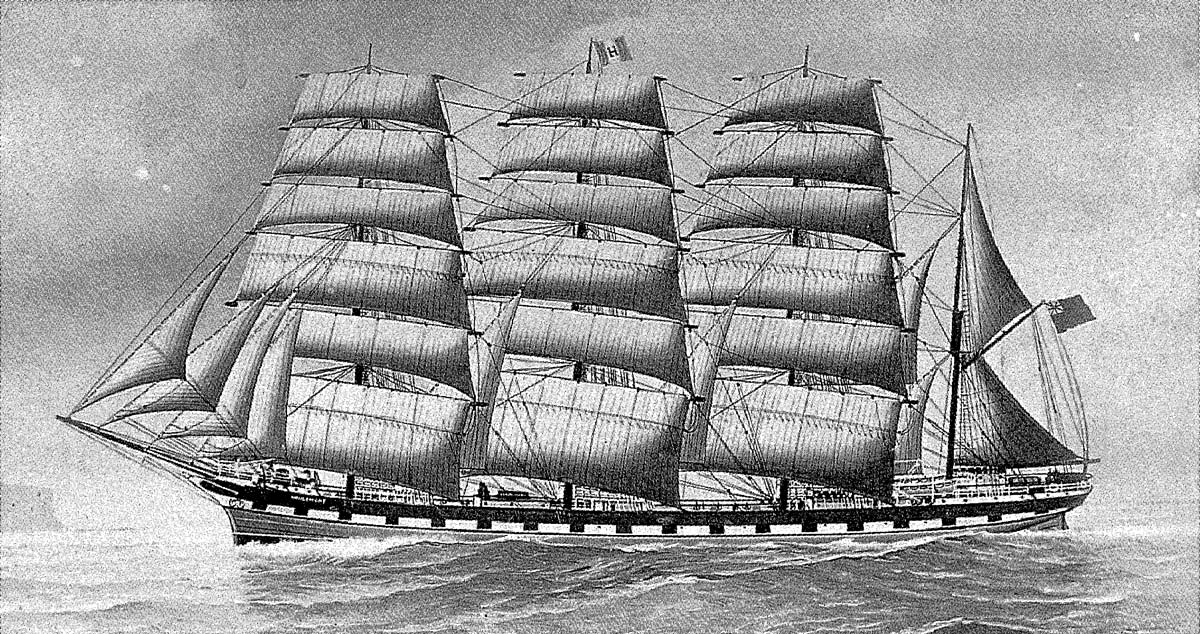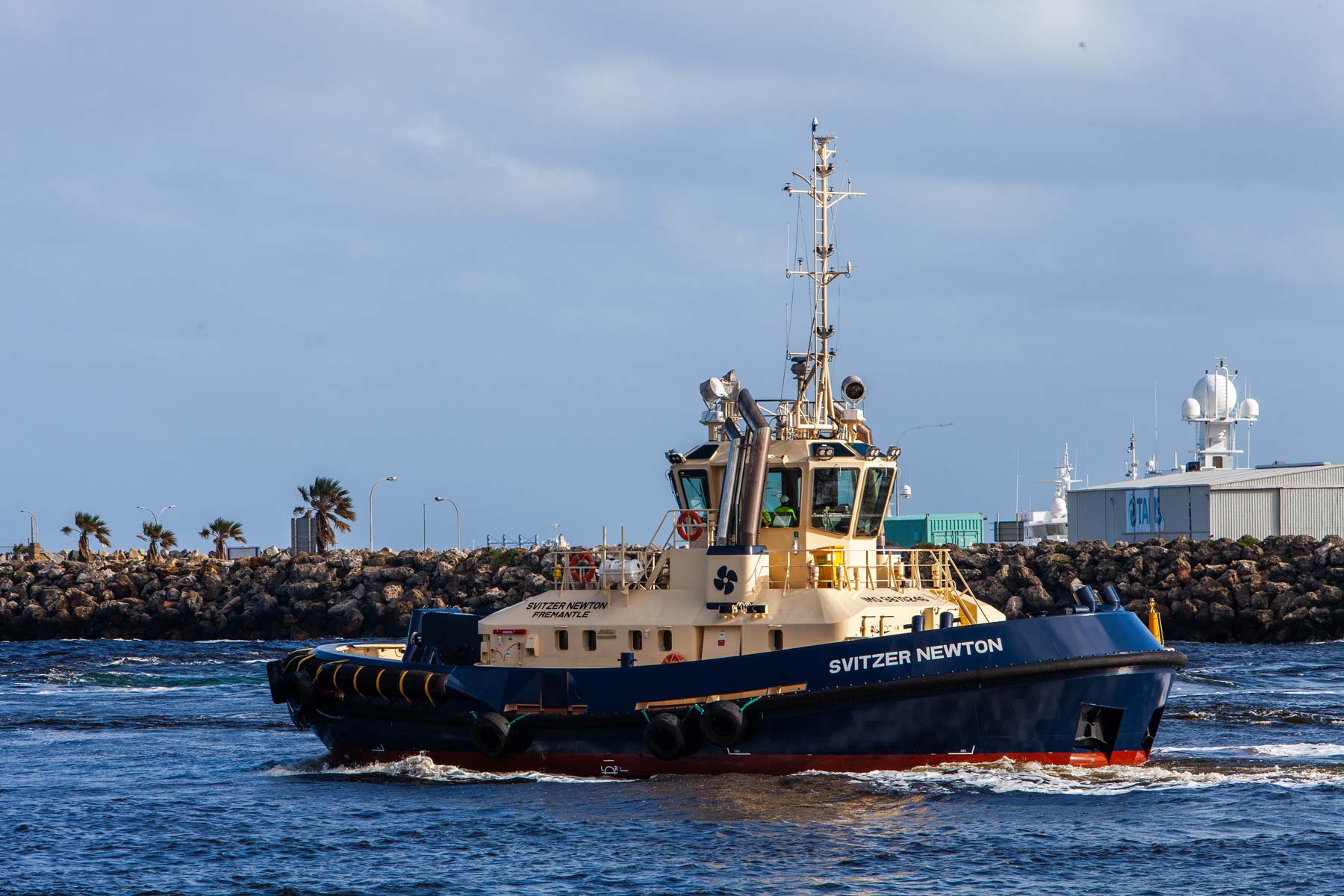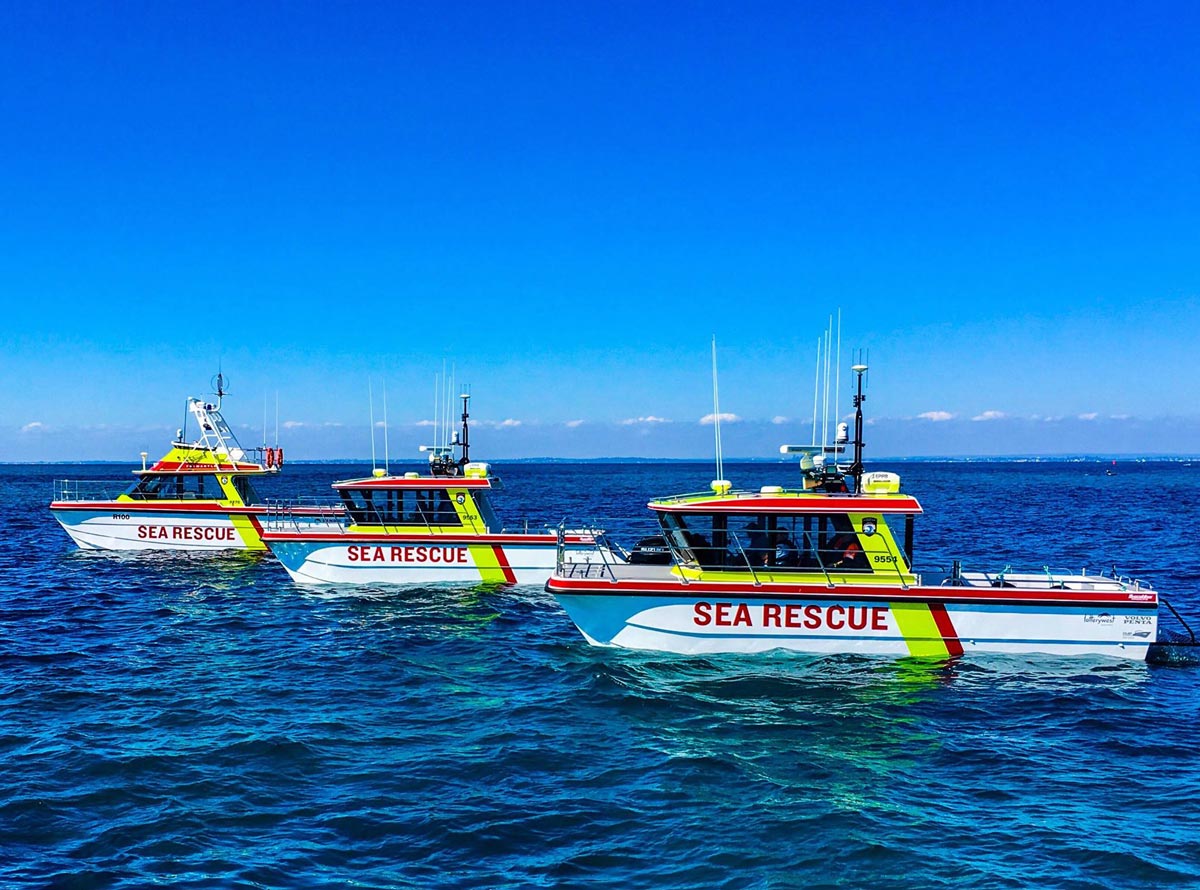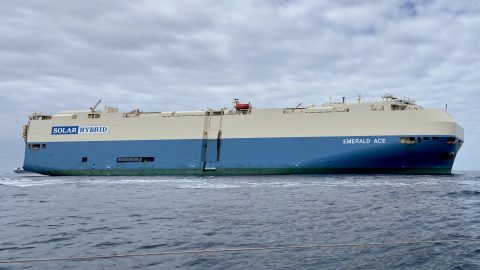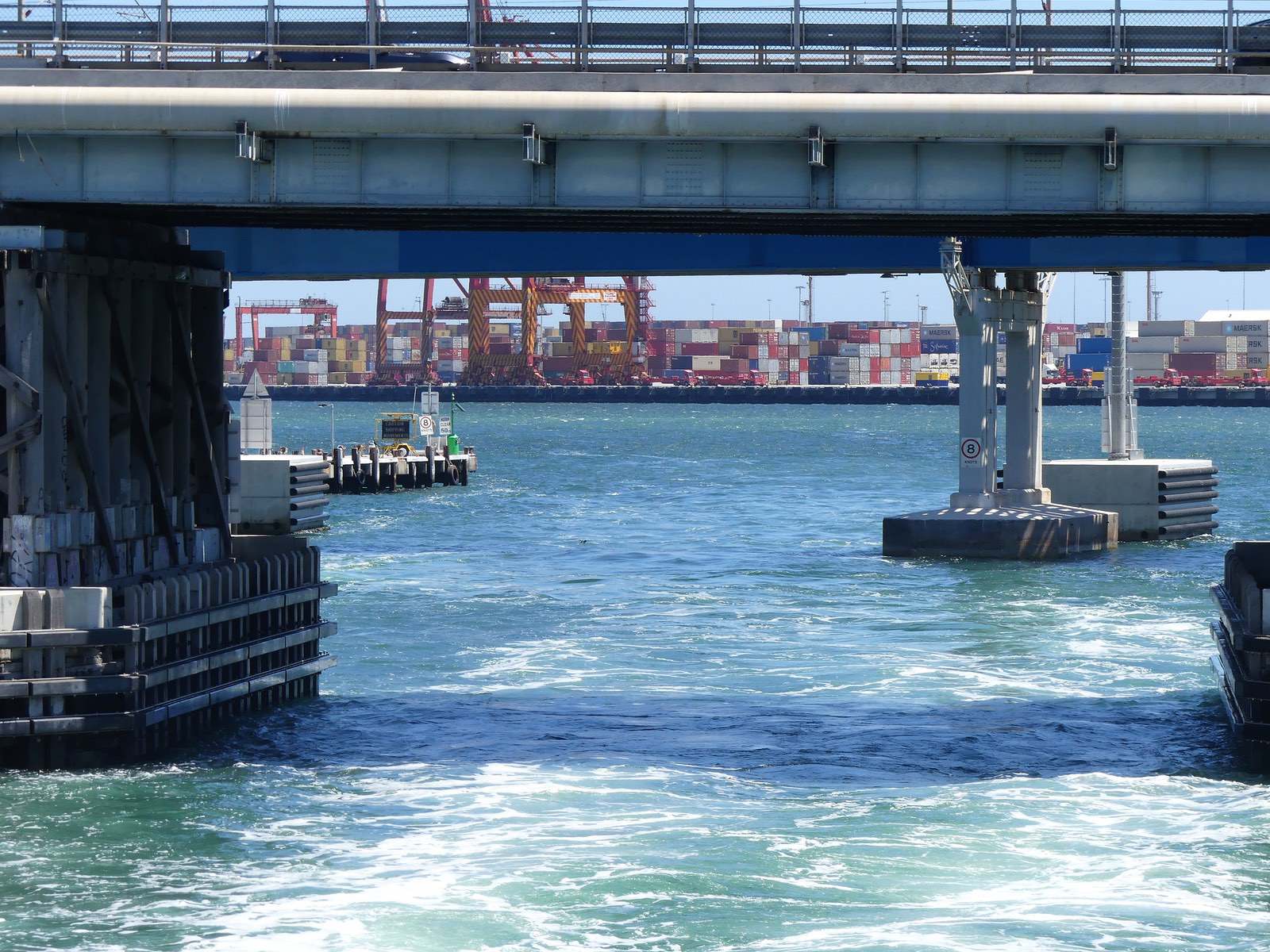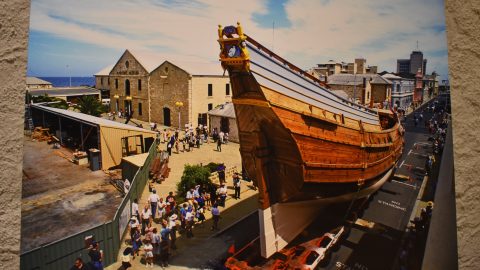In September 1979 –
* “My Sharona” by the Knack was number 1 on the hit parade.
* Malcolm Fraser was the Prime Minister of Australia.
* Mobile phones, although invented, wouldn’t become a ‘thing’ for another three years in Australia.
* Remote keyless entry systems for vehicles were still over three years into the future.
Tuesday, 25 September 1979, started off like most other 8 am – 4 pm shift days on the Fremantle Wharf. Only days before I had turned 26 and had been a Customs Preventive Officer (PO) for just over 6 years. On this particular Tuesday most of the 8-4 Fremantle shift had been sent to help out at the airport to assist with Passenger Processing, leaving me, a Preventive Officer In Training (POIT)), a Senior Preventive Officer (SPO)) and A Supervising Preventive Officer (SUPO)) to work on the wharf.
Someone decided we should search the MV Kota Bali. There had been a tip off from the Singapore Narcotics Bureau that ‘…the vessel was carrying drugs…’. This was not an isolated, special tip off and wasn’t given a lot of consideration.

MV Kota Bali
So, we studied the plans of the ship together with the details of the last search report.
The MV KOTA BALI (IMO: 5362582) was a Passenger Ship registered and sailing under the flag of Malaysia. Her gross tonnage was 8999 and deadweight 6264. She was built in 1950; her length overall (LOA) was 146.11 m and beam 19.08 m. Her container capacity was Zero.
As you can see, she was quite a small vessel and although described as a passenger ship she also carried a large amount of cargo and, on occasion, livestock.
The search report from the previous trip identified the ‘After Peak Store’ as one of the places searched. Our SUPO decided we would search the ‘After Peak Store’ again (partly as it had been searched by the POIT and the SPO on the previous trip), the funnel, plus two other locations that I can’t now remember.
Just before 0900hrs, the SPO, the POIT and myself drove the search van to the ship moored at the passenger terminal Victoria Quay to commence searching. Our hearts weren’t really in it, because as you can imagine, three Officers to search a ship is a bit of a joke. We decided to start with the funnel. The POIT and I started in the engine room and slowly and methodically searched the funnel from bottom to top. We were not actually in the inner funnel, where the smoke rises, but in a reasonably tight space between the inner funnel and the outer funnel (as you might see it from the outside). We didn’t discover anything but, by the time we emerged at the top, we were covered in soot and other crap. The SPO decided we would go back to Customs House, change into clean overalls and have morning tea. Anyone who worked for a Commonwealth Government Department back before 1990 or so will remember that morning tea was a pretty big deal. The amenities room would be full for a good three- quarters of an hour or more and there was a dedicated ‘Tea Lady’ to pour your tea or coffee! After a nice cuppa and a couple of biscuits we returned to the ship to continue searching.
Once back on board we headed straight to the After Peak Store, mainly because the SPO and the POIT remembered how to get to it from their previous search. On approaching the hatch in the deck leading down into the After Peak Store, it was blindingly obvious that the hatch was locked by a reasonably tough looking padlock. Bugger, now we had to find who had the key. The POIT jokingly said, “Well, if the drugs are going to be anywhere, they are probably going to be down here as this wasn’t locked on the last trip.”
So, we started asking around to see who had the key. ‘Nobody’ as it turned out. We couldn’t get anyone to admit having a key, not even the Boatswain who oversees all the store areas on board. The Boatswain also volunteered to remove the padlock with some rather large bolt cutters from the Engine room. This he did, then picked up the lock and started to move toward the side of the ship, probably with the intention of throwing the lock over the side. Not exactly sure why, but I stepped in front of him and took the padlock and placed it in the pocket of my overalls.
With the hatch in the deck now open the three of us climbed down into the After Peak Store. Even with the lights on it was dark and dingy with quite a heavy, pungent smell of hessian and manila ropes, rusting steel cables, tins of paint and stale air. There was a considerable pile of ropes, and it took us quite some time to work our way through them, uncoiling each rope and spooling it back down again into a neat pile.
The ropes ranged from small throwing lines with a diameter of 16mm or so, up to fairly large mooring lines 100mm or so in diameter. This was quite time consuming and fairly labour-intensive work and after an hour or so we were knackered. All that remained was the hatch in the middle of the floor heading further down and into the After Peak Ballast Tank.
Unbeknown to me, the POIT and the SPO had tried to lift this hatch on the previous search with no result as the hinges had appeared to be rusted solid. The POIT said to me “Come on Muscles, let’s see you lift that hatch up”. I bent down grasped the handle and with little effort opened the hatch. There was a look of amazement on both their faces. Ray said, “We couldn’t open that last time as it appeared to be seized solid.” The three of us all looked at each other remembering the POIT’s earlier statement, “Well if the drugs are going to be anywhere, they are probably going to be down here…”. I volunteered to go down first.
PLEASE HELP US TO GROW FREMANTLE SHIPPING NEWS
FSN is a reader-supported, volunteer-assisted online magazine all about Fremantle. Thanks for helping to keep FSN keeping on!
It’s important to point out at this stage that the vessel had what is referred to as a ‘canoe stern’, in other words it is similar in shape to the bow, as the sides of the vessel come together in the middle. Therefore, the sides of the hull at After Peak Store and After Peak Ballast Tank also came together.
The forward and/or aft Ballast tanks are flooded with seawater when required, to help with the trim of the ship. The tanks are usually completely full or empty, as a partly filled tank would create too much ‘free surface effect’ of the water. The tanks are filled with sea water, which, by its salty nature is highly corrosive. When the tank is empty the damp atmosphere increases the corrosion in the tank. Consequently, the inside of a ballast tank is 100% pure rust which over time slowly removes some of the oxygen from the trapped air.
Because the tank is at the lowest part of the ship it starts off very narrow at the bottom and the width increases significantly as it gains height. Imagine, in your mind’s eye, a canoe, cut the canoe in half across the middle and discard one half. Take the remaining half and cut across the middle again, keeping the quarter with the pointed end. The shape you have left is very similar to the shape of the After Peak Ballast Tank in this ship. Now imagine all the rust inside and the not very pleasant air, well that’s what I had just volunteered to climb down into!
Looking into the tank we could see that it is was empty. Just as well, as we didn’t have any EBA (Emergency Breathing Apparatus) or scuba gear with us. Climbing down the rusty ladder, the first thing I notice when moving my torch around was that there was absolutely no reflective light from the beam. The only area lit up was where the beam of the light rested. Climbing down a bit further I realised that, although the air was far from fresh, it was not too bad. (OH&S these days would not allow anyone into a similar space without EBA or similar – but this was over 40 years ago). This was, because there wasn’t any reflective light, the darkest place I have ever been with a torch.
I found myself at the wide end of the space (quarter of a canoe in your mind’s eye). The width was probably 4-5 metres and, as previously indicated, narrowing to a point at the rear of the ship about 5-6 metres away from me. Crossing the space athwartships (across the ship) were shallow bulkheads about 400mm high at their deepest point and about one metre apart. At this point the POIT called down to me, “Do you want me to come down and give you a hand?”. I replied, “You may as well, it’ll be quicker with two of us.” He then joined me in the tank, observing, “It’s bloody dark down here.” “You’re not wrong” I said. We proceeded to search the area, the POIT moving to one side of the ship and me the other, then we progressively climbed over each bulkhead until we were a couple of metres from the stern. At this stage both our torch beams swung around from the respective sides we were searching until they both come to rest simultaneously on a totally out of place object.
Neither of us said a word for what seemed like minutes, both torch beams steadily illuminating this very out of place object. Then there was a shared outtake of breath and the POIT exclaimed, “Shit, I guess that’s it then.” “Must be,” I struggled to utter. What we were looking at, was a large (possibly 20kg) wheat bag (with ‘Selected Australian Wheat’ printed on it), bulging at the seams with its contents and the very last thing we were expecting to see. In my experience with most ship searches you were very lucky if you found anything, let alone a completely out of place large item like this. Unless someone was playing a practical joke on the annoying ‘Customs Officers’ this was going to develop into something quite serious and bigger than we could imagine.
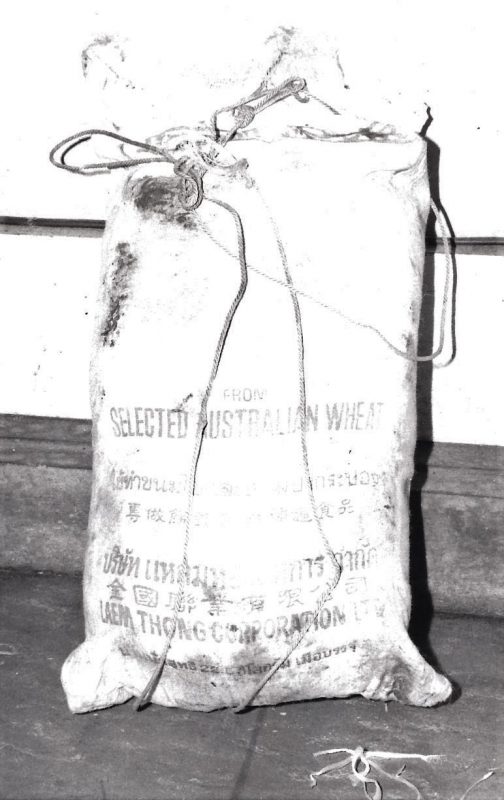
Hesitantly, I moved to grab hold of the bag. The POIT said, “What about fingerprints”. We were wearing gloves, and I doubt that the wheat bag material was likely to hold a fingerprint. “I don’t think that will be a problem and I can’t image anyone will come down here to ‘dust’ for fingerprints. We need to at least get it out of this tank and up to where the SPO is waiting.” I continued to grab the bag which felt about as heavy as two house bricks. Then between the two of us we got it over each bulkhead until we are standing at the bottom of the ladder. The SPO, looking down from the deck above, said, “Surely not?”. One of us said, “As unlikely as it seems we think it might be something”. We grabbed the bag and together passed it up the ladder, where the SPO lifted it through the hatch and placed it safely on the After Peak Store deck.
Then the three of us just sat there looking at it for what seemed like an age. After a while the SPO said, “We probably should have a look inside, just to make sure it isn’t someone having a lend of us.” So, carefully, he cut through the stitching at the top of the bag revealing several packages in plastic bags. Then he carefully cut into one of the plastic bags revealing what looked like a light pinkish chunky hard substance. “It’s starting to look like this might be the real thing”, he said. “If it is it would be worth Millions. We need to get this off the ship without causing too much attention or arousing suspicion.”
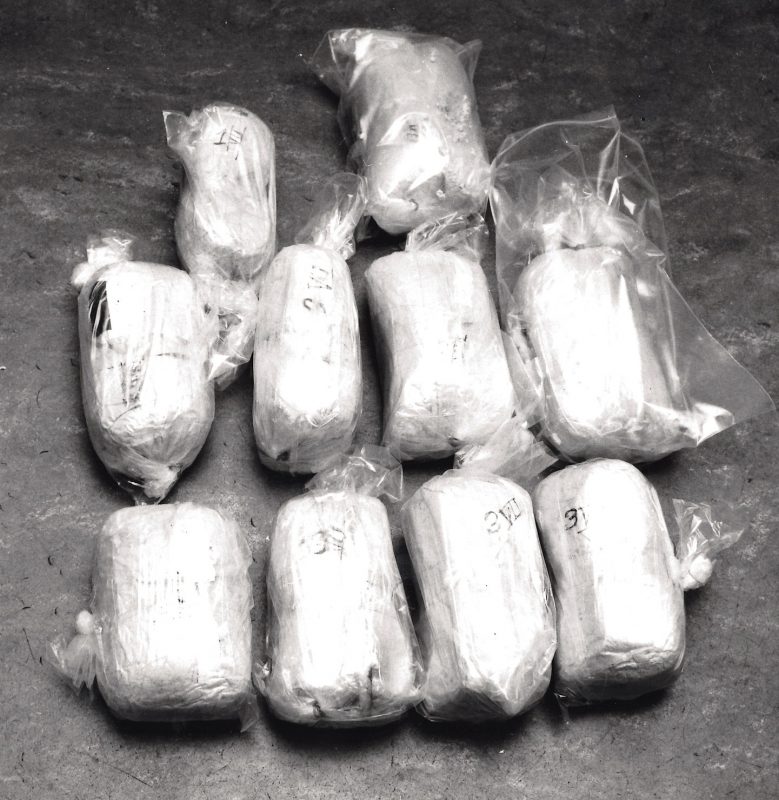
So, we looked around for something to put the wheat bag in that would, at least, make it look like something else. The only thing available in the vicinity was an empty potato sack. Shoving the suspicious wheat bag into the potato sack (a somewhat useless disguise) it slowly dawned on us there was only one way off the ship from where we were and that was directly through the crew quarters of the mainly Asian crew.
Somehow, I ended up with the job of carting the ‘find’ off the ship. Up onto the rear deck, I hoisted the bag and its, possibly, very valuable contents, up on to my shoulder. I then crossed the deck to the door into the superstructure and thence the crew quarters, trying to be as indifferent as possible to not raise suspicion. About halfway through the crew quarters it suddenly dawned on me, ‘Shit, if this ‘IS’ what we think it is, I could get ‘done in’ walking through here’. My indifference suddenly crumbled, and I quickened my step to get through the rest of the crew quarters as quick as possible.
A good PO mate of mine (even now, 40 odd years later) was manning the gangway, in what was referred to as a P1 Patrol, checking anyone or anything on or off the vessel. He had monitored some of the radio transmissions we had made so knew something was afoot. As I drew level with him, he said under his breath, “Is that the gear?”. Briskly walking past and on to the gangway I lied, “No its not”. I continued down the gangway to the Customs Office at the end of ‘F’ Shed on Victoria Quay. Entering the office and closing the door behind me I feel (stupidly) relieved. Not long after the POIT joined me in the office. Not much was said as we were still trying to process what may have just happened and where it might lead.
In the meantime, the SPO had contacted the SUPO in charge of the Processing of the Passengers off the ship and asked that he contact the Federal Narcotics Bureau (FNB) in Perth, to ask for some Narcotics Agents to come and collect this suspicious ‘find’. Initially the SUPO got the run around from the FNB as they have agents off doing ‘this’ and agents off doing ‘that’ and nobody left to attend Fremantle. So, he casually mentioned the tip off from the Singapore Narcotics Bureau, a description of what we had found and, importantly, its hiding place on the ship. All of a sudden, they can spare someone to come down to Fremantle to check it out!
So, a Narcotics Agent was dispatched to Fremantle.
In the meantime, the POIT and I have unpacked the wheat bag to disclose 20 individual packages in plastic bags. At that time Customs had its own photographer, complete with a darkroom and developing facility in Customs House. The photographer was soon dispatched to ‘F’ Shed to get some photographs of the ‘find’ to be used in evidence later should there ever be a trial.
The POIT and I spread the 20 packages out on the floor of the office so that the photographer could take some documentary photos. We ended up with two arrangements of ten packages, as they were wrapped in different shapes. Ten were of an elongated, flattened, sausage type shape and ten were more of a flattened square shape. Not sure anyone ever discovered why the two different shapes.
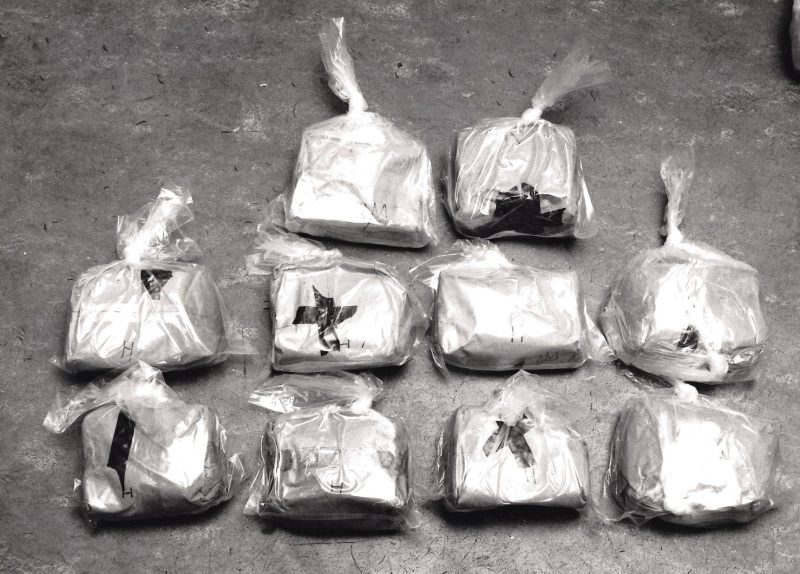
Not long after the photographer departed, an agent from the Narcotics Bureau turned up, I’ll call him ’Neville’ as I can’t remember his real name (may be just as well, as you will see). Neville sat down at a table to join us, enjoying a well-earned cuppa. The ‘find’ was still spread out on the floor. The POIT said, “Assuming this is drugs, what happens if someone storms in the door and demands the drugs? Quick as a flash Neville swings his left leg around and up onto the table revealing an ankle holster with a small revolver in it. “She’ll be right, I’ve got this”, he said, pointing to the gun. “Bullshit,” I said, “if someone comes in the door demanding the drugs, we say, ‘Yes sir and where would you like us to put them?’, assuming we are not already dead!” Then followed a heated discussion about what we could actually do in such a situation. Basically, ‘bugger all’ was the conclusion the POIT and I came to.
Somewhere around this time Neville decides to have a closer look at the ‘find’. He also requires a sample to take to the Commonwealth Labs in Perth to be tested. As he is doing that, much to our astonishment, he sticks his finger in the substance and tastes it, exclaiming: “No, this doesn’t taste like Heroin”.
The POIT and I are dumfounded that a professional working in the Narcotics Bureau would actually taste an unknown substance, which could easily be a poison of any description (he must have been watching too many Hollywood movies!). Anyway off went Neville with the ‘find’ to the Commonwealth Labs. We heard later Neville realised it was Heroin while he was on the way to the Commonwealth Labs, as his face went numb and he got the taste of almond on the back of his tongue – apparently a good indicator, not that I ever tried it. Good on you, Nev!
It was around then that Customs officers, Narcotics Agents and Police started arriving in force, soon they were swarming all over the ship. The SPO, the POIT and I had gone way past our normal end of shift time and, to be honest, with all the excitement, physical exertion and lack of food we were all a bit buggered. I did remember to give the padlock, that I had rescued from going for a swim, to someone, so that any keys located during the search could be tested in the padlock to see if they opened it. As it turned out the correct key was never found. Probably it had been tossed over the side around the same time the padlock was being cut off the hatch by the Boatswain. (Incidentally, the Boatswain was not on the vessel next time it returned to Fremantle!)
When I did eventually leave Fremantle later that afternoon and started driving to the ‘Red Castle Hotel’ in Lathlain (now gone after being damaged by fire in 2012) to catch up with my sister and brother-in-law for dinner, I heard a news item on the radio – “Customs find huge hall of drugs on a ship in Fremantle”. That’s when it finally hit me – ‘Wow that was us…’
The next day the headline in the West Australian read ‘RECORD DRUG HALL IN WA SWOOP’. Of course, like all news items that you are involved in, there were many anomalies.
It stated –
* 12 Kg of Heroin, it was actually 14.2 Kg. (Intriguingly only 18 kg of Heroin had been found anywhere in Australia for the whole of the previous year and, up until this find, only 10 kg found in Australia for the whole of 1979.)
* 25 officers were involved in the search. Well yeah, but only after the three of us had found it!
* It stated that it was ‘hidden in a drum’, but no drums anywhere to be seen!
* Over the next day or so the value varied wildly from $1m, $10m, $19m, $25m, $48m and $56m.
After it was tested and proved to be a type of pink rock Heroin, between 60% and 80% pure (one of the highest quality types available), the value finally settled on was $25m.
Although the ship was thoroughly searched, top to bottom, bow to stern, by a large search team and countless interviews conducted with all the crew members, nobody was ever accused or charged with the importation.
Purely because of the large quantity involved, there must have been a large drug syndicate involved at the top of the chain, but as far as I know this was never identified either.
Just over 6 months later, The four of us, the SUPO, the SPO, the POIT and I were invited to attend a ceremony at Customs House in Perth at which we were each presented with a ‘Certificate of RECOGNITION’ by the Collector of Customs, Paul Murphy. The Citations read –
“For your notable contribution to the search exercise conducted on the M.V. Kota Bali at Fremantle on 25th of September 1979 which resulted in the seizure 14.2 kg of heroin”.
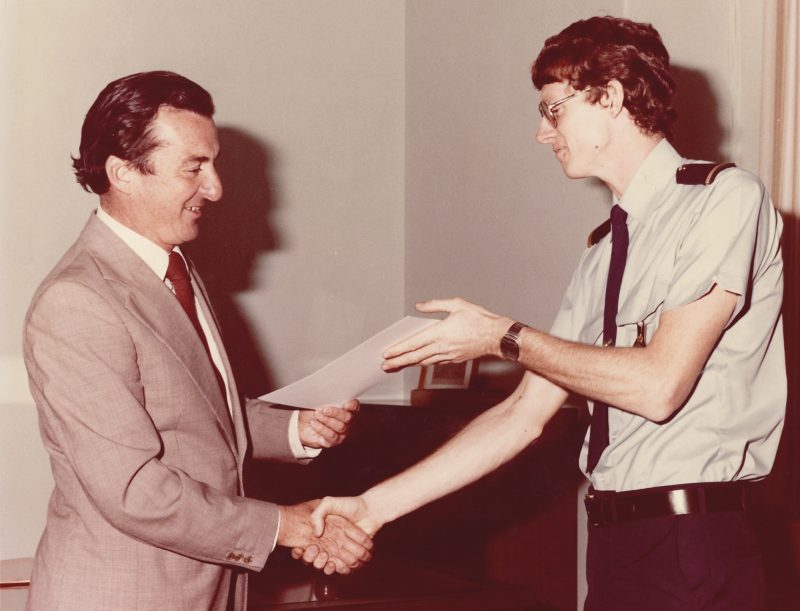
Bernie Webb being presented with his Certificate of Recognition
Moral of this story – It doesn’t hurt sometimes to be in the right place at the right time!
* By Bernie Webb
** In case you missed Bernie Webb’s earlier article, Foxy Lady II – The Hash Stash here it is.
** Don’t forget to SUBSCRIBE to receive your free copy of The Weekly Edition of the Shipping News each Friday!
